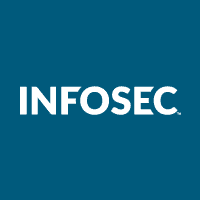CCNA certification prep: Network fundamentals [updated 2020]
What percentage of the exam focuses on network fundamentals?
The network fundamentals section is 20% of the CCNA 200-301’s topics. It’s neither the largest nor the smallest. The fact that the percentage increased from 15% in the previous version indicates that Cisco has emphasized the importance of having a strong base in this topic, on top of which you can add more advanced knowledge.

Earn your CCNA, guaranteed!
What topics are covered in this section of the exam?
Although the topics covered in this section are numerous and diverse, they can be categorized in just few major subsections:
- Network components: Routers, switches, access points, firewalls — basically, what makes a network infrastructure
- Network topology architectures
- Cabling
- TCP and UDP protocols
- IPv4: Addressing, configuration and verification
- IPv6: Addressing, configuration and verification
- Wireless principles
High-level overview of network fundamentals topics
Network components (devices) routers, switches, firewalls, access points, endpoints
This subsection covers the network infrastructure components along with the end user devices and their role in the network.
Routers
Just remember that at a basic level, a router’s job is to route packets between different subnets.
Switches
Although not limited to this, a switch is moving packets between different interfaces in the same VLAN, a process known as switching. At some point, you will encounter the terminology of L2 or L3 switches. A L3 switch is just like a router but has fewer routing features.
Firewalls
A firewall’s purpose is to protect the network against network attacks. Firewalls are becoming more and more capable and are even able to protect the network against viruses, ransomware and phishing, among other types of attacks.
Access points
In a world where mobility is critical, Wi-Fi availability becomes critical. An access point converts electrical signals to electromagnetic waves and the other way around. They facilitate the connection of a wireless device to the network.
Endpoints
Endpoints are end user stations like PC, laptops, tablets and smartphones. They request access to the application and the data travels across the network infrastructure.
Servers
The servers role is to host the application and data that is being requested by the endpoints.
Network topology architectures
It is obvious that when a network is built, it has to follow some principles to achieve resiliency, redundancy and optimal traffic forwarding. In time, the network architectures evolved, which means that some of the architectures are not used anymore. Some are being phased out, while others are getting more and more traction in the industry.
One of the most famous designs is the hierarchical model, which comes in two forms:
- Three-tier with access layer, distribution layer and core layer
- Two-tier, where the access layer and distribution layer are collapsed in a single layer
In recent years, a new design (leaf and spine) became popular, especially in the data center environment. While the concept is decades old and it is used by the cloud companies in their networks, it only started to become mainstream in the last decade.
A WAN network is a set of links that provide connectivity between the various locations or branches, headquarters and DC of a single company. Sometimes the WAN can be private and uses MPLS services from various service providers; other times, it can run over the public Internet.
You should be familiar with the SOHO (small office/home office) type of network and the fact that you can have quite complex networks deployed in the cloud as an extension of the on-premises networks.
Physical interface and cabling types (copper, fiber)
Copper
When it comes to copper connections, you should be familiar with a few Ethernet standards: 10BASE-T, 100BASE-T and 1000BASE-T, and how the electrical signal travels through an Unshielded Twisted Pair (UTP) cable. Be sure that you master the pinout for straight and crossover cables and know what kind of cables must be used between endpoints and router and/or switches.
Fiber
As with UTP, you will need to know some of the standards for fiber connections, the components of a fiber cable and how the optical signal is transmitted through a single or multimode fiber.
Interface issues (collisions, errors, speed)
An interface has speed and duplex parameters, each with multiple possible values. Make sure you understand these characteristics because very often, the communication is impaired by errors and collisions caused by the fact that the two sides are not using the same settings of speed and duplex.
TCP versus UDP
This section is part of a major topic that discusses the OSI model and TCP/IP model. While the OSI model is a theoretical one, TCP/IP stack is being used on networking devices.
First, understand at which layer these two protocols operate and what it means that one is connection oriented and that the other one is connectionless. Being able to differentiate the traffic up to this level will help the candidate understand what happens in a network when there is packet loss, among other things.
How to configure and verify IPv4 addressing and subnetting
Before you configure IPv4 addresses on the networking devices, you need to master how to determine the subnet size based on the number of the hosts and determine the number of subnets of a network based on the size of the subnets. It is also critical to know how to convert a subnet mask from shorthand to decimal and the other way around.
Make sure you understand the boundaries of the IPv4 classes and the purpose of the private IPv4 and are able to explain what the RFC1918 private subnets are.
If all the above is understood, the configuration and verification of IPv4 addresses is much easier, as you will know what to configure and what to expect from the router or switches output.
How to configure and verify IPv6 addressing
IPv6 is a little bit more complicated and a little bit different than IPv4; the IPv6 header is different still from IPv4. IPv6 has several address types, which can be easily identified by the starting hex digits.
The commands to configure and verify IPv6 addresses and a few other features required for CCNA exam are almost the same as for IPv6. The difference is that you must use “ipv6” instead of “ip.”
Wireless principles (SSID, RF, encryption, channels)
SSID
An SSID is nothing more than a wireless network. At this time, almost everyone that has a smartphone is using an SSID to get connectivity without knowing exactly what it is. Understand how the access points are broadcasting the SSIDs and how the repeaters are extending the Wi-Fi reachability.
RF
Here, things get pretty technical. To understand better how Wi-Fi works, you will need to review wave propagation, the relation between frequency and cycle, and what a hertz is. This will help you understand what the channels are.
Channels
A channel is nothing more than a range of frequencies. You will need to understand how the channels are distributed in several known bands (2.4GHz and 5GHz).
Encryption
Like any medium of transmission, Wi-Fi can provide authentication, message privacy and message integrity. There are few authentication methods along with several privacy and integrity methods. You will need to know about them and the difference between them.
Virtualization fundamentals
This topic is about virtual machines. You will need to know the purpose of a hypervisor, some of the most known hypervisors (open-source and commercial versions) and how they can help to utilize as much as possible the resources of the physical servers.
Switching concepts
MAC addresses
MAC address is the Layer 2 address of a host. You will need to know the size of a MAC address and what do you find in the MAC address table of a switch. Understand the type of MAC addresses.
Frame switching
You will need to know how a MAC address is learned by a switch, what the difference is between broadcast traffic, known unicast and unknown unicast traffic. Also, you must be familiar with how a switch forwards the frames for the known traffic.
Flooding
This is related to the way a switch forwards broadcast and unknown unicast traffic. You will need to be aware under which conditions, such as flooding can cause loops that can easily bring down a network.
Where should I focus my time studying?
This section looks like something basic and while you advance in your career, you will see that it actually was. But for someone at the beginning, it’s critical to spend as much time as possible to understand all the topics. They lay the ground for more advanced topics and lacking this fundamental knowledge will cause you pain in the future.
For example: if you do not understand how a frame is forwarded by a switch, you will not know that you must not connect two cables between two switches without taking other protection measures and you could bring the network down.
Conclusion
The CCNA Network Fundamentals section is split into multiple parts, each covering specific basic notions. The time spent now on these fundamental topics will save you time in the future coming back and reviewing these topics.
Sources
200-301 CCNA Exam: Cisco Certified Network Associate, The Cisco Learning Network

Earn your CCNA, guaranteed!
Wendell Odom, "CCNA 200-301 Official Cert Guide, Volume 1," Cisco Press, 2019





